Girolamo Francesco Maria Mazzola (ca. 1503-1540), better known as Parmigianino, was one of the leading painters and etchers of the Mannerism period. Born in Parma, hence his name, he was raised by his mother and two of his uncle, both of them artisanal painters. From an early age, Parmigianino was trained to draw and paint by his teachers and uncles with his earliest work, The Baptism of Christ (ca.1519), figure 1, being painted between the ages of 14 and 16.
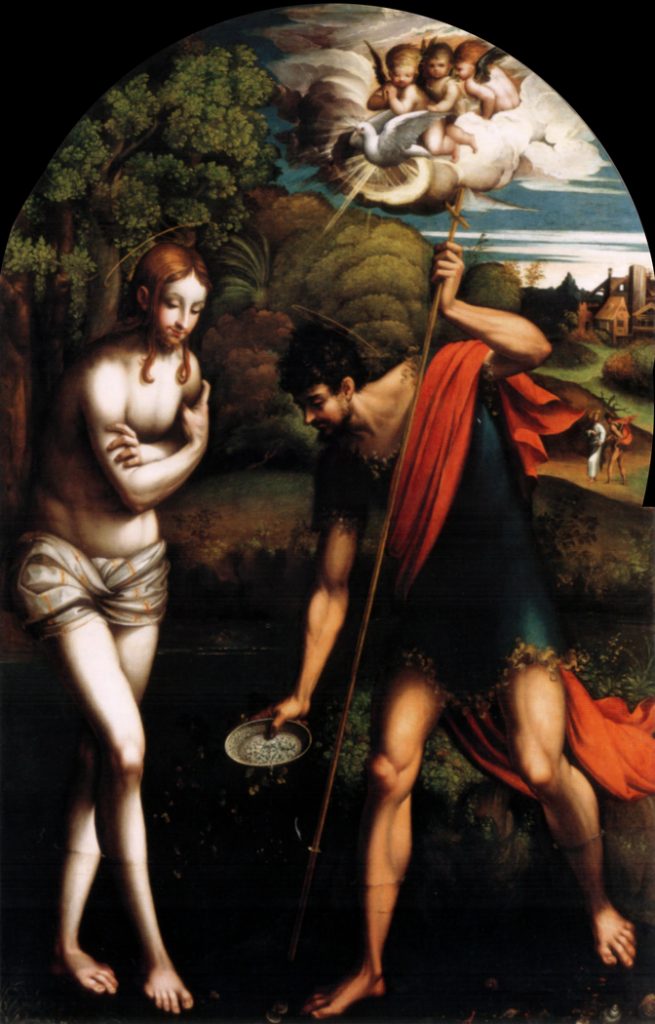
Later in his youth, Parmigianino worked aside another great High renaissance and mannerism artist, Antonio da Correggio. Although Parmigianino never became his apprentice, he took great influence from him in the softness and composition of his pieces. Notably, Michelangelo and Raphael additionally were great influences of his work.
In 1523, the 21 year old artist moved to Rome where he continued to paint. The sack of the city in 1527, forced Parmigianino to leave Rome and head to Bologna. He returned to Parma 4 years later. Near the end of his life, Parmigianino was imprisoned for missing a commissions deadline from the church and died a year after bail in ca.1540 at the age of 37.
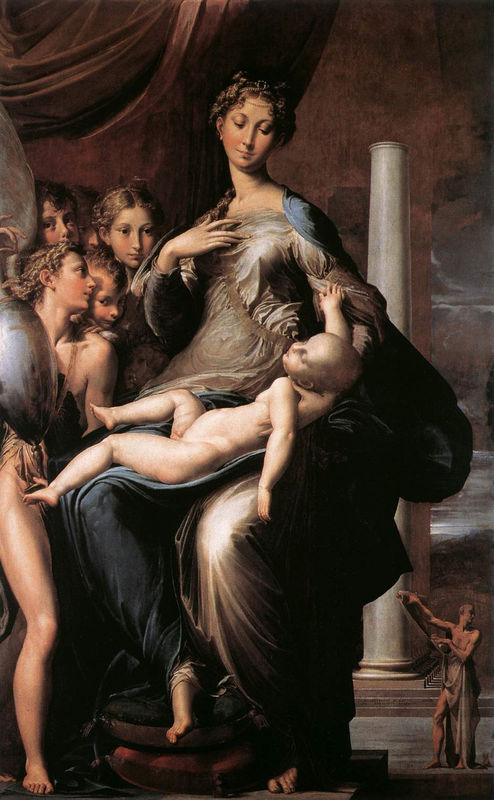
Although living a short life, Parmagianinos legacy and style is still one of the most recognized of the Mannerism period. His artworks expressed great sensuality with his ability to create softness and rhythmic beauty. He painted figures with exaggerated height and slender, a quality particular to Mannerism style. Such characteristics are notably seen in his painting Madonna & child with Saint-John the Baptist and Jerome (1524), figure 2, with Madonna adorning a long neck and slender fingers. Such treatment of “affectation and sophistication” (Gombrich, 1995, p.364) to the “sacred subject”(ibid.) became nearly offensive. This particular piece also demonstrates his mastery in composition with the angels densifies into a corner and shortened creating contrast with the beautifully elongated Madonna thus making her the central focus of the peace.
Another great painting was his Self-Portrait in a Convex Mirror (ca.1524), figure 3. This artwork demonstrates his rigorous exploration and examination of various perspectives and “unusual spatial relations within the frame.”5. His ability to create congruous compositions was well characterized in this self-portrait as well with elements such as his impersonal face expression with the irregular and unstable perspective. These conflicting components purposely counterbalanced each other in such a way creating in other words, harmony.

His etching were equally masterfully done with the same attention to detail, composition and mannerist qualities. Some of his most notable works are The Lovers (ca. 1527-30), figure 4, Youth & Old men (ca. 1518-40), figure 5, and The Annunciation (early 16th century), figure 6.
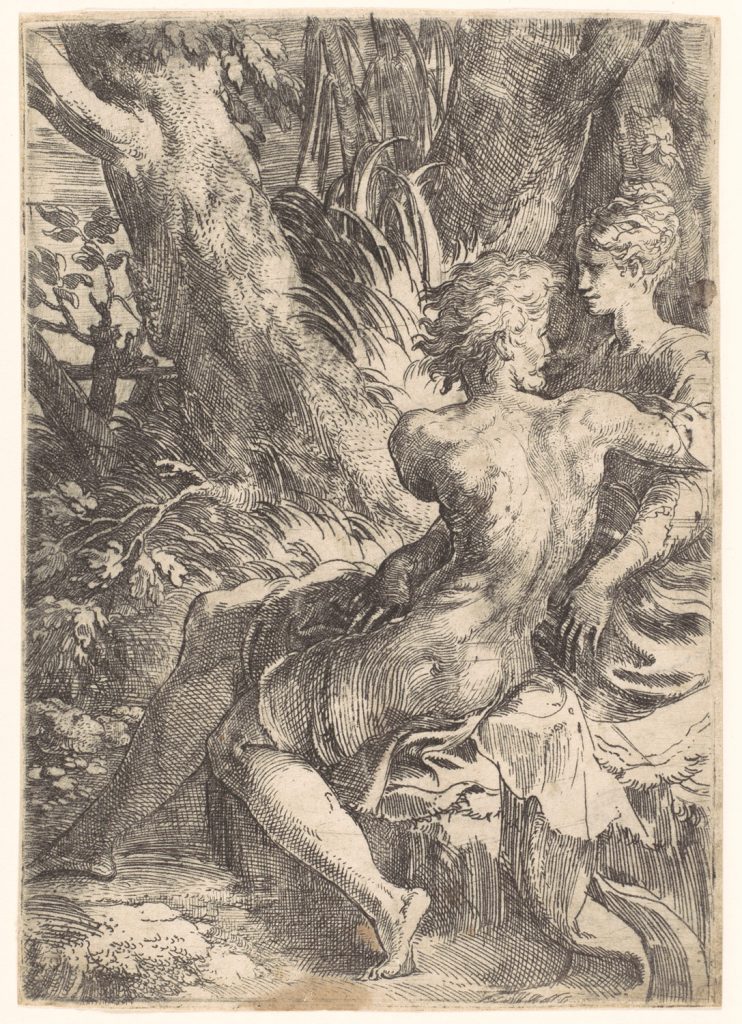
Figure 4. The Lovers 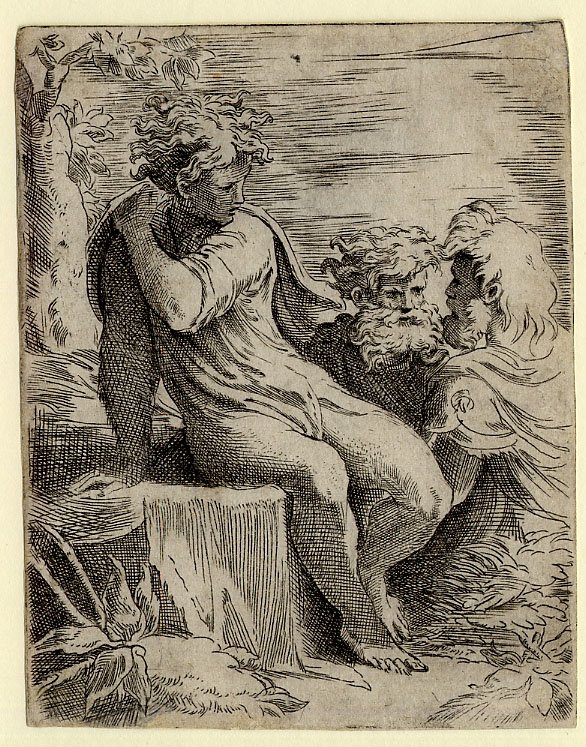
Figure 5. Youth and Old Man 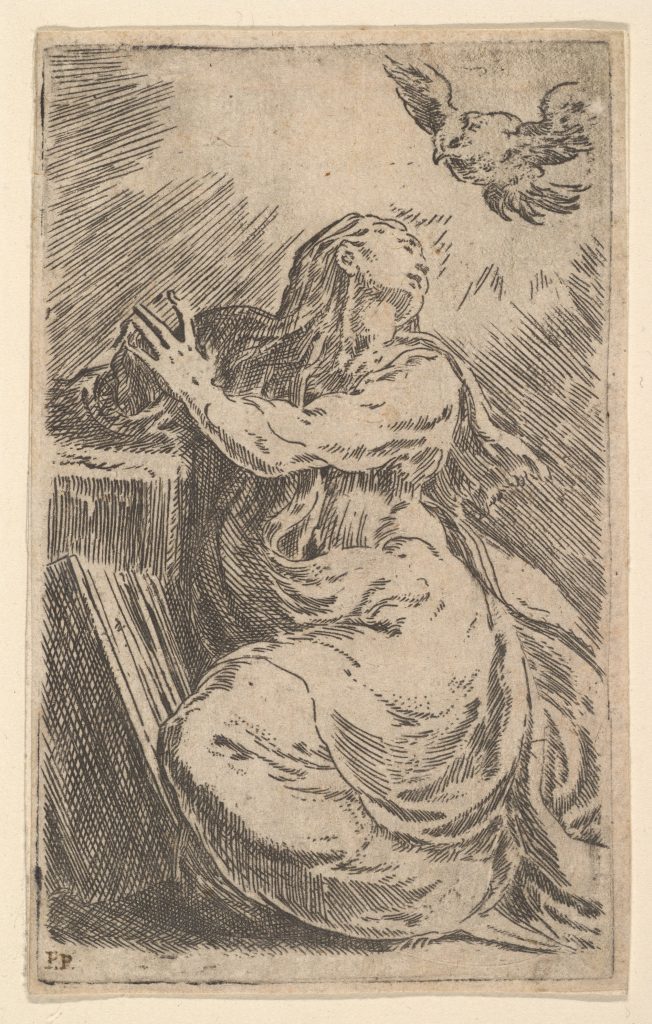
Figure 6. The Annunciation
Parmigianino was a master of demonstrating both quality and style without one inhibiting the other. Granted he was gifted from an early age, it was his passion and drive to be the best that led him to become an artist still praised to this day.
Work Cited.
Online Encyclopedia
“Parmigianino, (Girolamo) Francesco (Maria Mazzola) (1503–1540).” The Hutchinson Unabridged Encyclopedia with Atlas and Weather Guide, edited by Helicon, 2018. Credo Reference, https://ezproxy.capilanou.ca/login?url=https://search.credoreference.com/content/topic/parmigianino_1503_1540?institutionId=6884. Accessed 24 Sep. 2019.
“Parmigianino.” The Columbia Encyclopedia, Paul Lagasse, and Columbia University, Columbia University Press, 8th edition, 2018. Credo Reference, https://ezproxy.capilanou.ca/login?url=https://search.credoreference.com/content/entry/columency/parmigianino/0?institutionId=6884. Accessed 24 Sep. 2019.
“Parmigianino.” Britannica Concise Encyclopedia, Encyclopaedia Britannica, Britannica Digital Learning, 2017. Credo Reference, https://ezproxy.capilanou.ca/login?url=https://search.credoreference.com/content/entry/ebconcise/parmigianino/0?institutionId=6884. Accessed 24 Sep. 2019.
Website
“Parmigianino Paintings, Bio, Ideas.” The Art Story, www.theartstory.org/artist/parmigianino/.
Images
Parmigianino. “Baptism of Christ.” USEUM Beta, ca.1519, useum.org/artwork/Untitled-Parmigianino-1519.
Parmigianino. “Madonna with the Long Neck.” Artble, 1534, www.artble.com/artists/parmigianino/paintings/madonna_with_the_long_neck.
Parmigianino. “Self-Portrait in a Convex Mirror.” Khan Academy, ca.1524, www.khanacademy.org/humanities/renaissance-reformation/high-ren-florence-rome/pontormo/v/parmigianino-self-portrait-in-a-convex-mirror-1523-24.
Parmigianino. “The Annunciation.” THE MET, www.metmuseum.org/art/collection/search/391602.
Parmigianino. “The Lovers.” THE MET, ca.1527-30, www.metmuseum.org/toah/works-of-art/26.70.3[102]/.
Parmigianino. “Youth & Old Men.” Spencer Alley, spenceralley.blogspot.com/2016/10/etchings-by-parmigianino-1520s-and-1530s.html.
